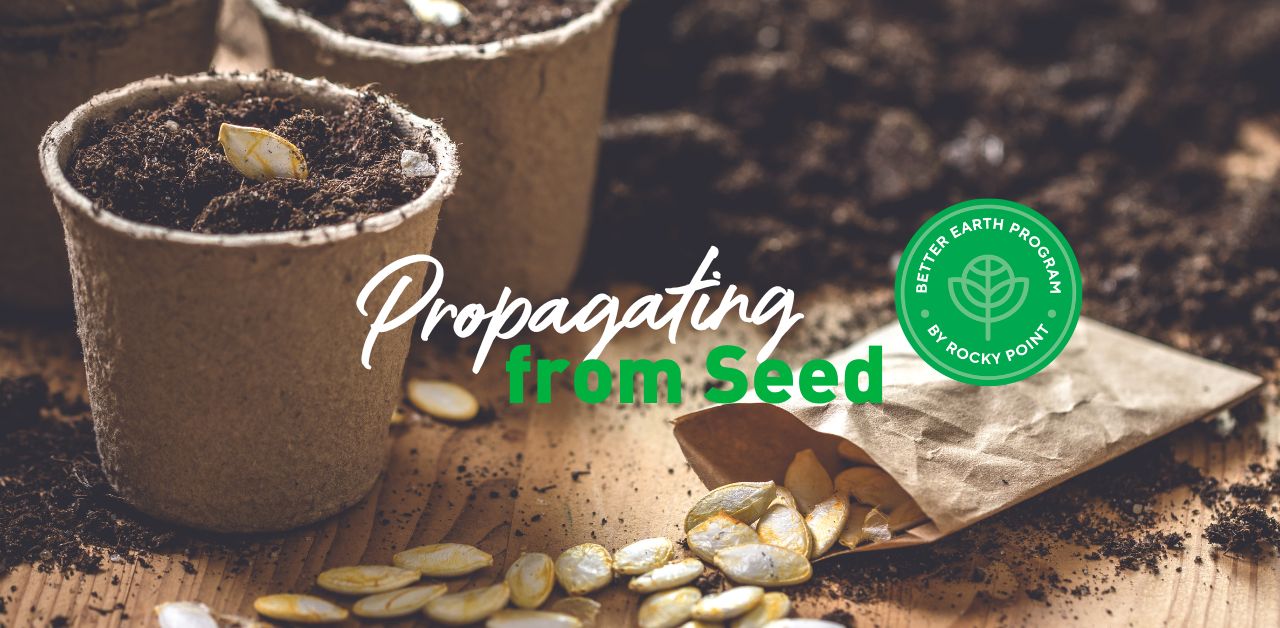Seeds are a cost effective and simple way to go about creating new plants for your garden whether it be the vegetable and herb garden or your seasonal flowering annual gardens.
Some seeds are best sown directly into your garden bed, large seeds such as pumpkins, melons, zucchini and root crops like radish, carrots, parsnip and beetroot. Root crops have a strong dislike of having their roots disturbed once they’ve germinated. Others can be easily germinated and grown in punnets or small pots until they have matured enough to be planted out into the garden or larger containers.
Why grow from seed?
With a little know how growing your own seedlings from seed is dead easy.
It's also cheap, fun and there is a far greater choice when it comes to different varieties of flowers and vegetables.
Getting started:
You need to know what you can sow when, because sowing seeds that aren’t in season means that you will have little if any good seed germination.
What do I mean by in season? Most flowers and vegetables have a preferred time of year that they will germinate, grow and flourish in.
How to sow seeds:
- Potting Mix: Fill up your seedling punnets with Rocky Point Seed and Cutting Mix. This mix is super fine and has good moisture holding qualities but will also importantly drain freely. You can also do a split mix one half Rocky Point Coco Pro and the other half Rocky Point Seed and Cutting Mix which will allow for additional nutrients in the growing media as your seedlings grow and means you won’t have to repot as quickly.
- Tamping Down: Tamp your seed raising mix lightly, but make sure that you don't compact it - you want it to be light and airy, so you get good root development. The best method is just to put it down on a surface and give it a couple of good taps.
- Sowing: Surface sowing is ideal for very fine seeds that can easily be buried too deep. This is where you sprinkle the seeds on the surface and then lightly sprinkle some mix over the top. A general rule of thumb, seeds should be sown at a depth of whatever their circumference is.
- Position and Care: Place your punnet in a nice sunny position and keep it well-watered but not sodden.
- Liquid Seaweed: The first stage after germinating your seedling plants will have their cotyledons or 'seedling leaves.' This is the time to start giving your seedlings some liquid seaweed and weak applications of fish emulsion weekly.
- Thinning Out: The second stage is a couple of weeks on. Your seedlings will still have their cotyledon leaves, but they will have formed their first true leaves. At this stage you can thin out the punnet, which is removing the weaker plants, leaving enough room for the stronger plants to continue on growing without competition.
- Re-potting/planting: Finally, after around six weeks you should have strong and vigorous plants that can go straight into the garden or be potted up into larger containers. Again, choose a good quality premium potting mix that will continue to feed and support your seedling growth.
Better Earth Tip:
It is critical not to let your seedlings dry out and to keep up the nutrition because if they want for anything - water nutrients or light, they can fail to thrive.
_MEB.png?width=842&height=596&name=RP_HorizontalColour(R)_MEB.png)



